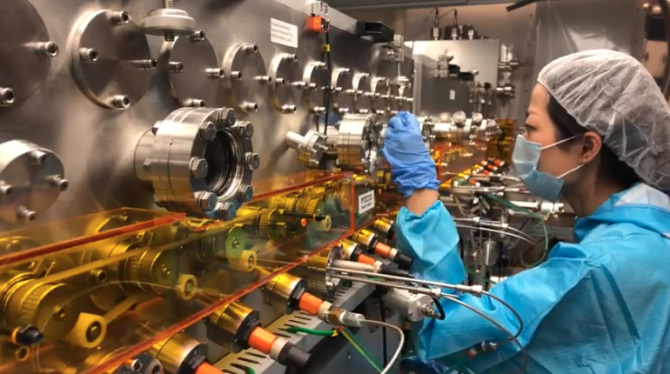
Researchers use quantum computing to simulate OLED material properties
EP&T Magazine
Electronics Optoelectronics Engineering computing optoelectronics quantum researchOTI Lumionics, and UBC find quantum computing methods to accurately predict the colour of light emission from OLED emitter materials
OTI Lumionics, a Toronto-based developer of production-ready advanced materials for consumer electronics, and the University of British Columbia (UBC) announced that they have demonstrated quantum computing methods have an advantage over standard classical methods in simulating organic light-emitting diode (OLED) display emitter materials, when using OTI’s iterative qubit coupled cluster (iQCC) quantum method.
“Quantum computing has enormous potential to transform virtually every industry, but there have been little to no demonstrations of their value to date on real industrial problems. In this work, we set out to demonstrate that quantum computing methods could be better at simulating the properties of materials used in the best displays found in consumer electronics,” says OTI’s CEO Michael Helander, PhD.

OTI Lumionics Chief Executive Officer Michael Helander, PhD.
“The development of new materials for electronics is very precise, requiring specific material properties to be designed within tight tolerances, which is a challenge for traditional computer simulations. We developed new quantum computing methods to address this need by better simulating key properties of the emitter materials used in OLED displays. This gives us the ability to more efficiently design and screen new emitter materials in software that can meet the precise colour and performance specifications required for displays in next-gen consumer electronics,” Helander adds.
The findings from the collaborative research clearly indicate that quantum computing methods can have a powerful advantage in computational materials design. While the synthesis of many materials is typically needed to develop a new OLED material with the right colour – a very costly and slow process – the demonstrated quantum computing methods can be used to more accurately simulate these colours in software, reducing the number of materials that need to be synthesized and tested.

Research shows quantum computing methods have an advantage over standard classical methods in simulating organic light-emitting diode (OLED) display emitter materials. Source: OTI Lumionics
Findings open the door to many industrial use cases
“This work establishes a clear practical use for quantum computing, which isn’t to be taken lightly. When deployed on emerging quantum hardware, OTI’s iQCC quantum method has the needed accuracy to help design organometallic complexes more efficiently, which are crucial to developing better OLED displays as well as other materials, like catalysts,” said Zachary Hudson, Associate Professor at UBC. “Our findings open the door to many industrial use cases for quantum computing, from developing better consumer electronics, to better batteries, catalysts and drugs. There’s a lot of excitement around quantum computing, and we predict the technology and research will continue to evolve rapidly.”
For complete details on the research and results, visit the leading chemistry journal Angewandte Chemie International Edition, or view the paper on arXiv.
